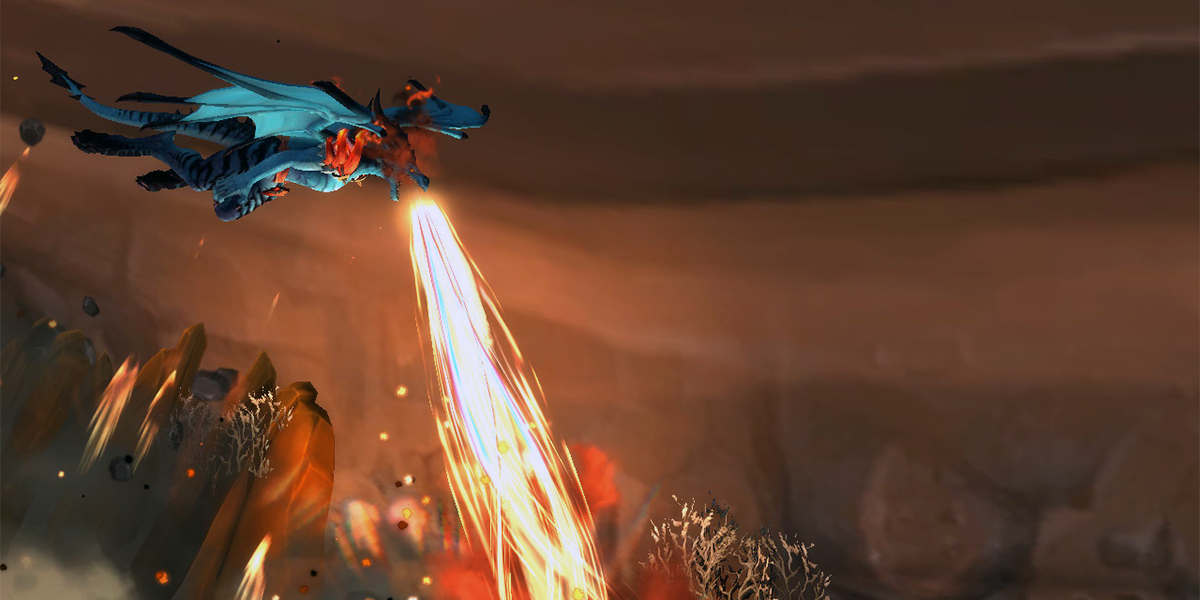This section covers some of the more advanced mechanics for Devastation Evoker, including early-chaining Disintegrate casts, as well as lesser-known tips and tricks.
Disintegrate Chaining and the Pandemic Mechanic
Channelled spells in World of Warcraft generally share most behaviour with Damage Over Time effects, and Disintegrate is no exception.
What is “Pandemic”, or Disintegrate chaining?
“Pandemic” as a mechanic generally refers to recasting a DoT within the last 30% of its remaining duration such that the remaining duration adds on to the base duration of the newly applied DoT, resulting in no loss of damage when reapplying DoTs early.
Disintegrate normally ticks four times over the duration of two global cooldowns. If you cast Disintegrate, and then clip the channel just after the third damage tick by casting a new Disintegrate, the last remaining tick and duration are added onto the new cast.
What is the point of chaining Disintegrate?
This is a somewhat subtle interaction, but this effect ultimately has two major consequences:
- This mechanic is essentially how you “spell queue” Disintegrate after Disintegrate; chaining Disintegrate casts in this way serves to minimise damage lost to downtime between spell casts (it can add up!)
- This allows you to spend your Essence or Essence Burst earlier than otherwise possible, helping to minimize or prevent over-capping of resources.
Note that Titanic Wrath and Iridescence always provide four buffed ticks of Disintegrate per Essence Burst spent regardless of whether the Disintegrate casts were chained.
When should I chain Disintegrate?
As long as you intended to cast one Disintegrate after another, you should always use the chaining mechanic between these casts.
The Pandemic or chaining mechanic is a clever tool for minimising downtime between channelled casts, and to minimize wasted resources. Changes to certain interactions have eliminated any apparent downsides, and chaining Disintegrate is always encouraged as long as proper timing is considered.
Below is an example of two chained casts of Disintegrate using the Pandemic mechanic. The first cast ticks 3 times before the spell is cast a second time, and the second cast ticks 5 times, for a total of 8 ticks, as expected. Be sure to always chain Disintegrate after the second-to-last tick, aiming for the “pandemic safe zone” in the last 20 percent or so of the cast bar to be safe.
Hover and Movement
Hover is the cornerstone of Devastation Evoker mobility, allowing you to cast most spells while moving, with the exception of Empower spells Fire Breath, and Eternity Surge.
Thoughtful and deliberate usage of Hover is the key to maintaining uptime of Devastation’s core damaging spells in spite of the 25-yard range restriction.
As currently implemented, casting Hover while moving incurs a short 0.45 second animation lock and launches you in your direction of movement. This includes a surprisingly helpful dodge backwards when holding down backpedal.
Casting Hover while standing still also incurs a short animation lock, but you do not move.
The animation lock from Hover prevents additional spell casting for its duration, however Hover can be cast during the global cooldown of other spells as if it were an off-global ability.
This means that you can actually lead with an instant cast ability like Azure Strike, or Pyre, or if talented, Burnout, Snapfire, or Shattering Star to slightly optimise damage dealt, and even macro an instant cast ability together with Hover if you were truly so inclined.
Hover also includes a short grace period, where you are allowed to finish your cast while moving as long as you began the spell cast while Hover was still active.
Additional casts of Hover stack duration.
Blessing of the Bronze and Time Spiral
Evoker has access to two abilities that affect allied players’ major movement abilities:
Blessing of the Bronze: Reduces the cooldown of a major movement ability for all party and raid members for one hour.
Time Spiral: Grants allies one additional free cast of their major movement ability for 10 seconds.
The following are the major movement abilities affected by these two effects for each class:
Death Knight: Death’s Advance
Demon Hunter: Fel Rush or Infernal Strike
Druid: Dash or Tiger Dash
Evoker: Hover
Hunter: Aspect of the Cheetah
Mage: Blink or Shimmer
Monk: Roll or Chi Torpedo
Paladin: Divine Steed
Priest: Leap of Faith
Rogue: Sprint
Shaman: Spiritwalker’s Grace or Spirit Walk
Warlock: Demonic Circle: Teleport
Warrior: Heroic Leap
Additional Tips and Tricks
Emerald Blossom does not cost Essence for Devastation Evoker.
Deep Breath can be quite finicky; while the spell has improved through Dragonflight’s development, it can potentially fail to cast while still incurring its cooldown if the end destination is unreachable, or if you are stunned, etc., prior to beginning the flying animation.
It is highly recommended to have the class ability Chosen Identity turned on at all times. Your Visage form provides you (and your party) with non-trivial increased out-of-combat health regeneration, which is excellent for open-world and instanced content like M+.
Eternity Surge does not automatically cancel if the primary target dies while holding Empower. In this situation, Eternity Surge goes on cooldown, and damage to the primary target is lost, but the spell will continue to deal damage to an appropriate number of nearby targets based on the Rank of the spell cast. You must manually cancel the spell cast in order to prevent Eternity Surge from casting and going on cooldown.
Titanic Wrath does not buff any additional effects triggered when casting Disintegrate and Pyre, such as Scintillation and Volatility.
Rescue generally does not interrupt your ally’s spellcasting, with some exceptions like Empower skills. Rescue your friends to your heart’s content guilt-free.
